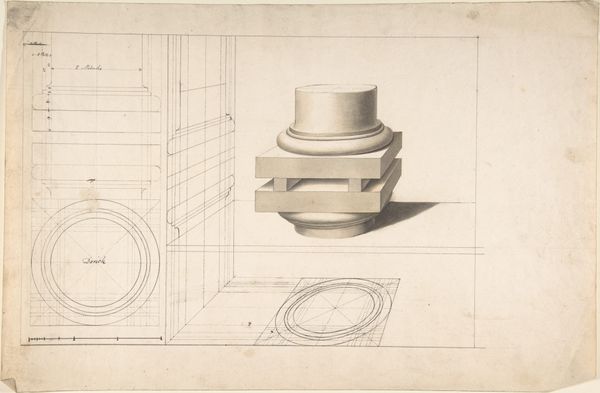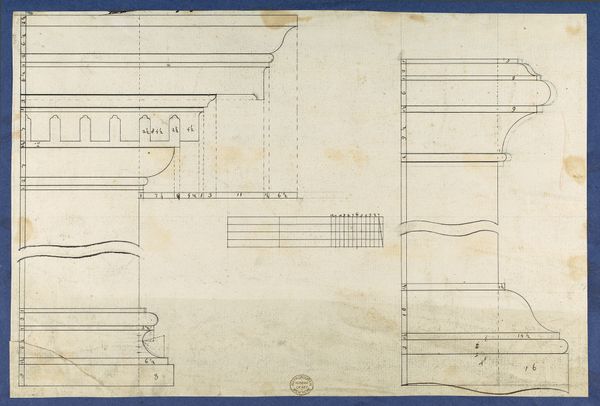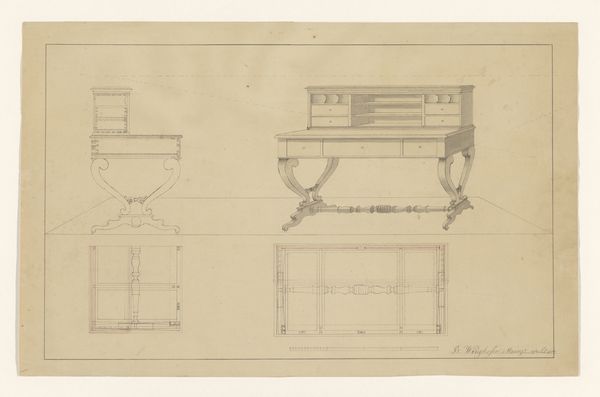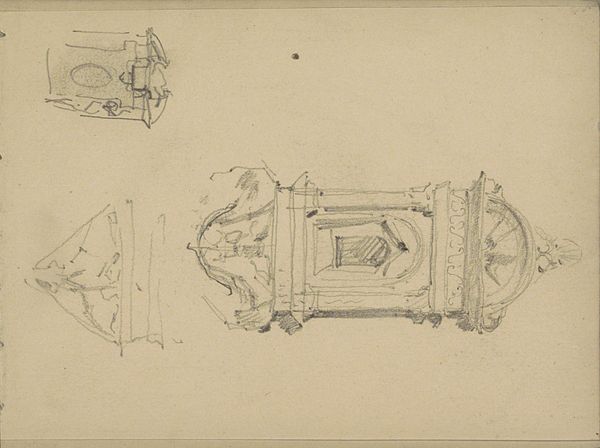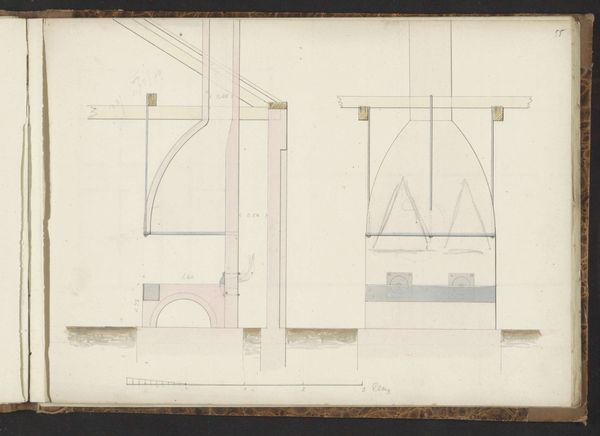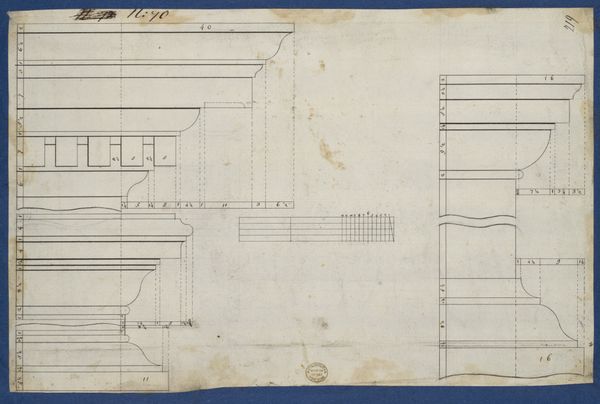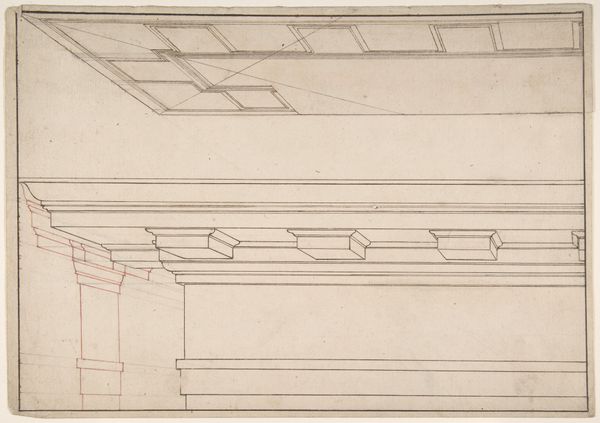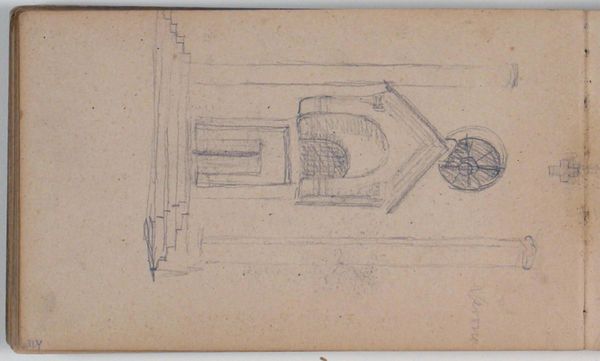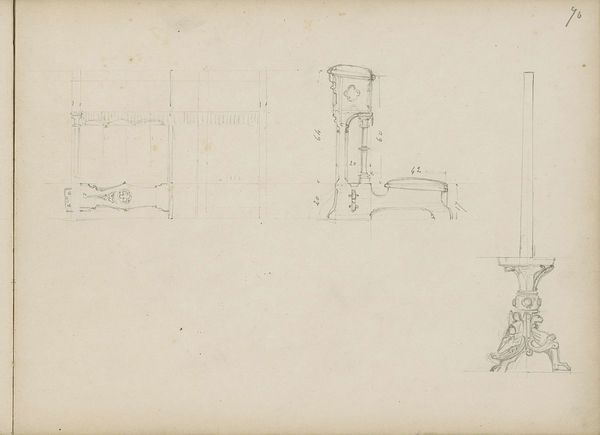
Architectural Perspective Study Showing Two Column Bases (Recto); Architectural Perspective Study Showing Column Capital and a Measurement Key (Verso) 17th century
0:00
0:00
drawing, print, etching, ink, pencil, architecture
#
architectural sketch
#
drawing
# print
#
etching
#
etching
#
perspective
#
11_renaissance
#
ink
#
geometric
#
classicism
#
pencil
#
line
#
architecture
Dimensions: sheet: 8 3/8 x 11 15/16 in. (21.2 x 30.3 cm)
Copyright: Public Domain
Curator: Looking at this drawing from the 17th century titled "Architectural Perspective Study Showing Two Column Bases," one gets the immediate sense that someone was really sweating the details! I find myself drawn to its cool, almost sterile precision. Editor: It is rather clinical, isn't it? It reminds me of Foucault's ideas about surveillance and architectural power. You're right; there's this almost obsessive rendering of perspective, a system used here to create an illusion of order, but also to control how we perceive and inhabit space. Curator: Exactly! There’s something about the grid-like structure imposed on the architecture that speaks to a desire for mastery over form and space, doesn't it? I almost want to loosen things up! Chuck a wildflower in those perfect circles. Editor: And this striving for rationalism in art and architecture during that period often overlooked the lived experiences of marginalized communities who were most impacted by these power dynamics. This piece feels symbolic of that exclusionary viewpoint. Curator: That’s interesting. I was thinking about the technical skill required. Look at how the artist, who is currently unknown, used line and hatching to define these shapes and to create a sense of depth on a flat surface. Editor: Well, it's undeniable that understanding perspective drawing revolutionized artmaking practices, and you see it used more broadly. But those techniques, in architecture, were only useful because colonizers relied on this logic to claim indigenous land for settlement. They saw the straight line as synonymous with power. Curator: A very somber thought...it's so easy to get lost in the technique that the purpose feels...distant. Editor: These images aren’t politically neutral, right? This pursuit of flawless rendering had material consequences. As does artmaking, and curation, more broadly! Curator: True. Looking at it now, I see this piece as both beautiful in its intricate craftsmanship and complicated by the weight of its historical context. Editor: I think the real value of engaging with works like this lies in uncovering the stories they tell us not just about art history, but about ourselves.
Comments
No comments
Be the first to comment and join the conversation on the ultimate creative platform.
